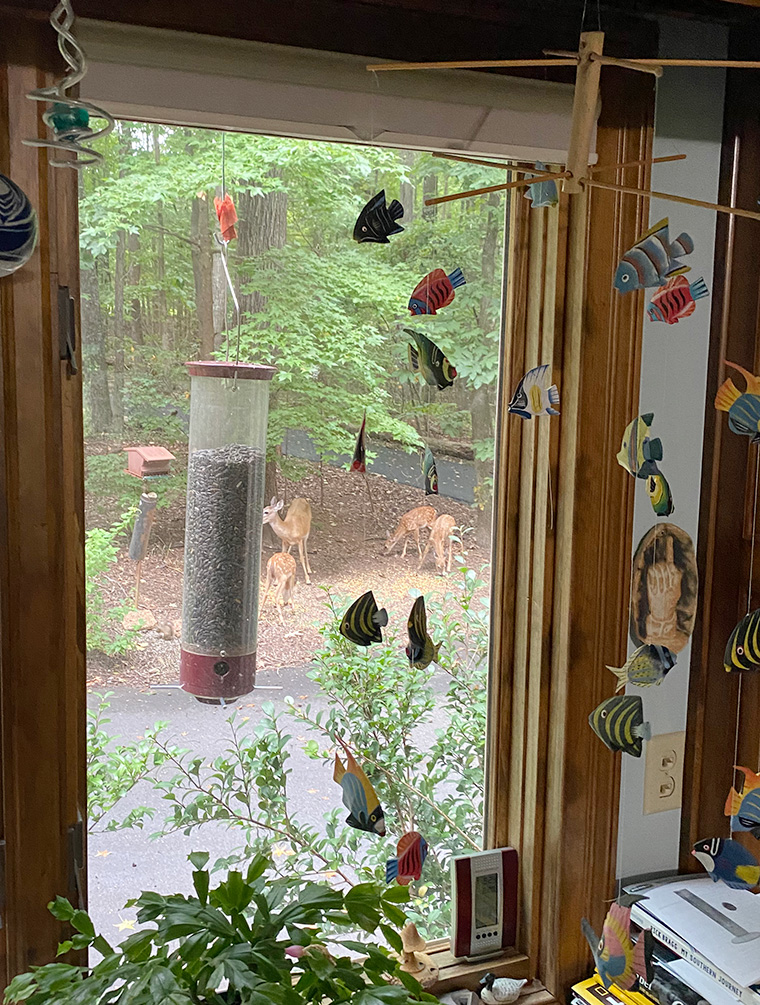
Here is a photograph taken through our kitchen window showing a mother with three fawns. They have been attracted by corn and sunflower seed scattered on the ground and shared by birds, squirrels, and chipmunks.
There seems to be an unusual number of Whitetail Deer (Odocoileus virginianus) fawns this year. We have seen mothers with single fawns, twins, and for the first time in this current year, triplets. How common are triplets? Apparently female deer having their first pregnancy usually produce a single offspring. Twin fawns are the most common progeny type, and then there are triplets. On the internet I found frequencies ranging from 2% to 8%, and in one study with deer in an enclosure and provided with ample food the frequency rose to 14%. Even quadruplets are possible (at a frequency of about 0.5%).
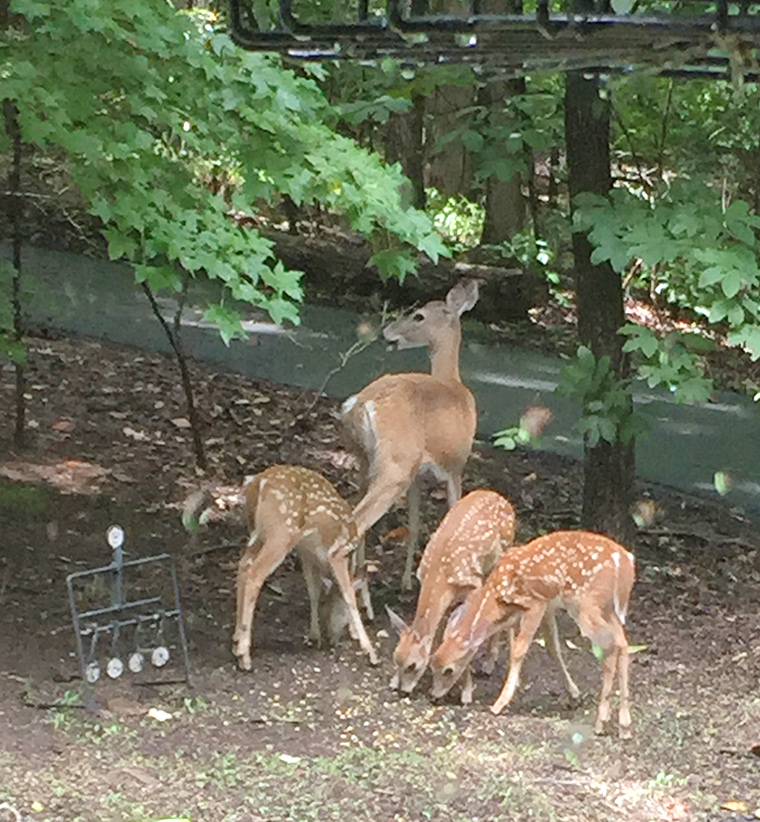
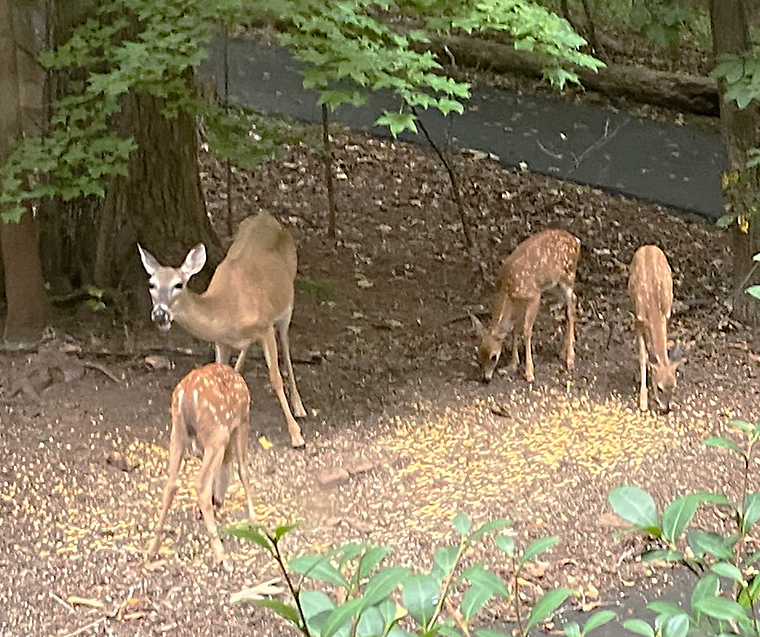
Here are more photographs of the mother with her three fawns.
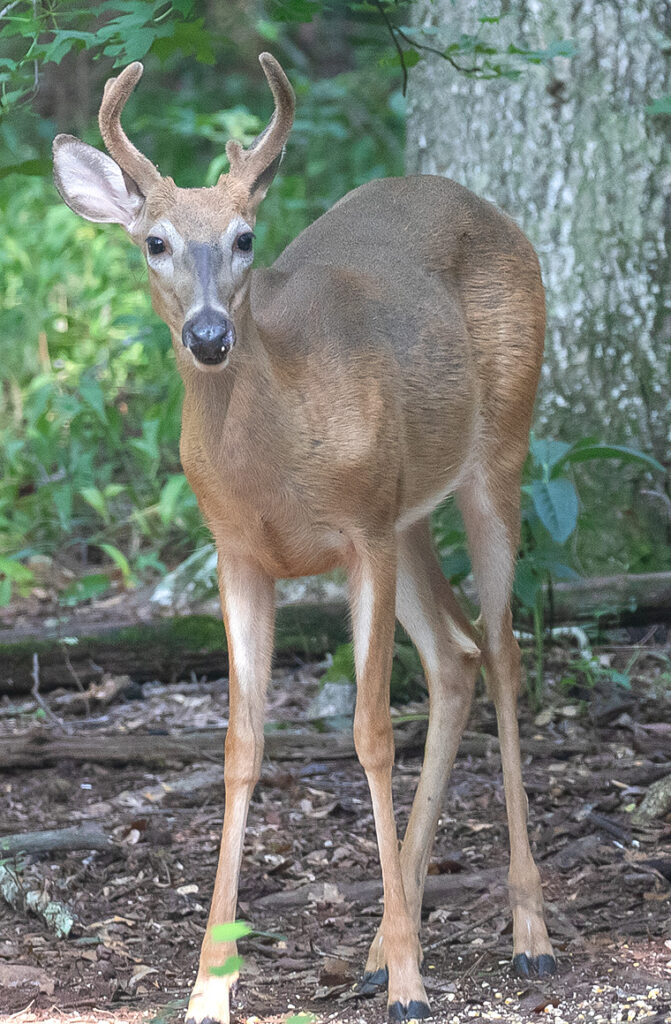
Although we see a lot of deer, we seldom see bucks. Here is a photograph of one from August of last year, just to show you the stage of development they would have reached at this time of year.
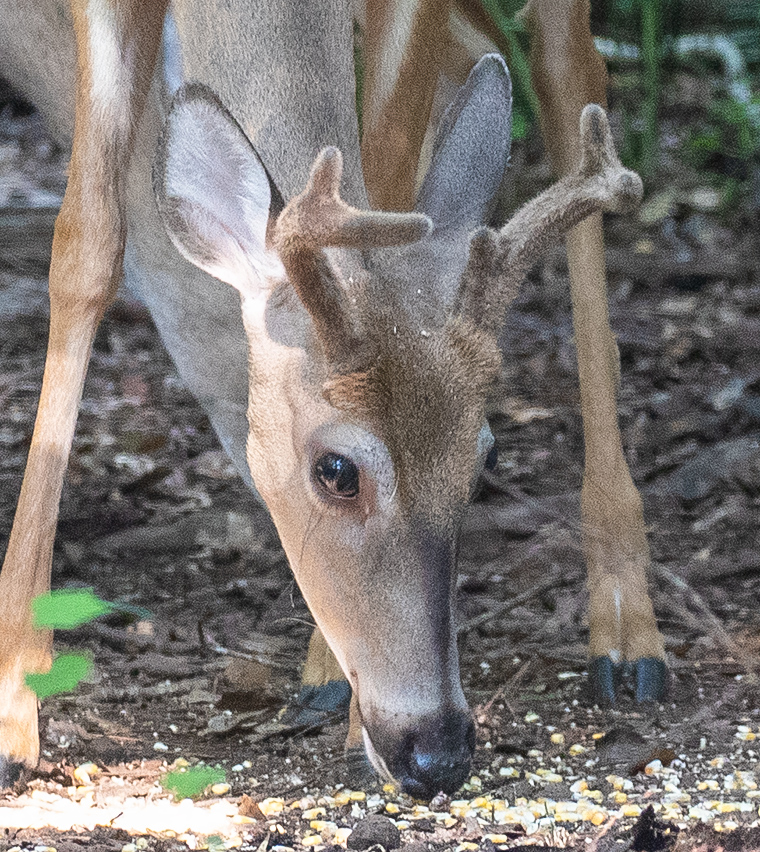
This one has antlers still in “velvet” which means the antlers are still covered by a layer of tissue which provides nourishment to the growing antlers. A buck will eventually get rid of the velvet by rubbing its antlers on a tree or shrub. This buck will apparently be a “six pointer” when its antlers mature. After the mating season, the antlers will drop off, and the buck will have to grow a new set for the next year.
Discover more from A Naturalist's Journal
Subscribe to get the latest posts to your email.
